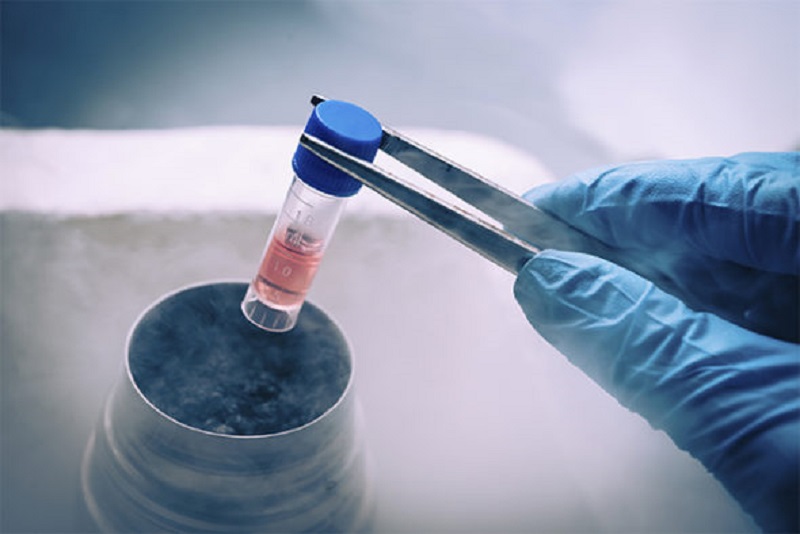Sperm freezing or sperm cryopreservation is the process of preserving sperm cells at a low temperature for future use. A sperm cryopreservation program provides an opportunity for a man who is potentially infertile at present or in the future to have offspring. Sperm cryopreservation needs to be discussed and offered to patients before therapies that can reduce male fertility such as cancer treatment or vasectomy (cutting the sperm duct as a form of contraception). This program is also used to ensure the availability of sperm prior to IVF. High human mobility can prevent men to hand over their sperm during IVF. If the man has previously frozen sperm, the sperm can be used for the IVF instead.
The history of sperm cryopreservation dates back to 1776. Lazzaro Spallanzani used snow during winter and observed that human sperm move after freezing and thawing. In the mid-20th century Polge discovered that glycerol was an effective freeze-protecting agent for sperm freezing. Since then, glycerol has been the primary freeze-protecting agent (cryoprotectant) used to freeze the sperm of most animal and human species. The first pregnancies resulting from human sperm frozen with glycerol were reported in 1953.
Until 1963, human semen was preserved at -75 ° C on “dry ice”. All pregnancies result from short-term storage of sperm. In later developments, liquid nitrogen (-196 o C) replaced dry ice. With liquid nitrogen, sperm can be stored longer. Reports show that human semen stored for approximately 40 years by this method can still result in pregnancy and live birth. IVF with the intracytoplasmic sperm injection method allows not only sperm in the semen to be frozen, even sperm obtained from the epididymis (sperm duct) and testes can be frozen.
The sperm cryopreservation procedure that is commonly performed today causes a decrease in the percentage of sperm moving and surviving by up to 50%. Often some sperm will be lost because it sticks to the wall of the frozen sperm container. For healthy men with large sperm counts, this reduction in sperm quality and quantity will not be a problem because a few million sperm move after thawing is sufficient for IVF. However, for men whose semen contains less sperm, this decrease in quality and quantity will be a big problem. Methods that allow cryopreservation of sperm in unit counts are especially beneficial for patients with severe fertility disorders.
Many researchers are trying to find new technology, especially for freezing sperm in limited numbers. They use several biological and non-biological storage materials. Researchers from Unair have used Cryologic® (a device for storing frozen embryos) and managed to store sperm in any amount ( https://docs.google.com/viewer?url=https://www.balimedicaljournal.org/index. php / bmj / article / viewFile / 1732 / pdf ).
Anticipating that new therapies will be available in the future, some medical centers have decided to save the testicular tissue of children with cancer. They are at high risk for infertility and have no other choice to maintain their fertility. It is hoped that sperm stem cells from cryopreserved tissue will be a suitable source of cells for sperm formation outside the body or transplantation back into the patient’s testes in the future after healing from cancer. Sperm cryopreservation is an effort to preserve fertility which allows storage of sperm for an unlimited period of time and ensures the availability of sperm for the IVF process. Any amount of sperm can be frozen.
Penulis: Agustinus, dr., Sp.And
Details of this research can be viewed at:
https://ijbs-udayana.org/index.php/ijbs/article/view/230
Hinting, A., Agustinus, A. 2020. Recent updates of sperm cryopreservation technique: a literature review. Indonesia Journal of Biomedical Science 14(2): 92-98. DOI:10.15562/ijbs.v14i2.230





